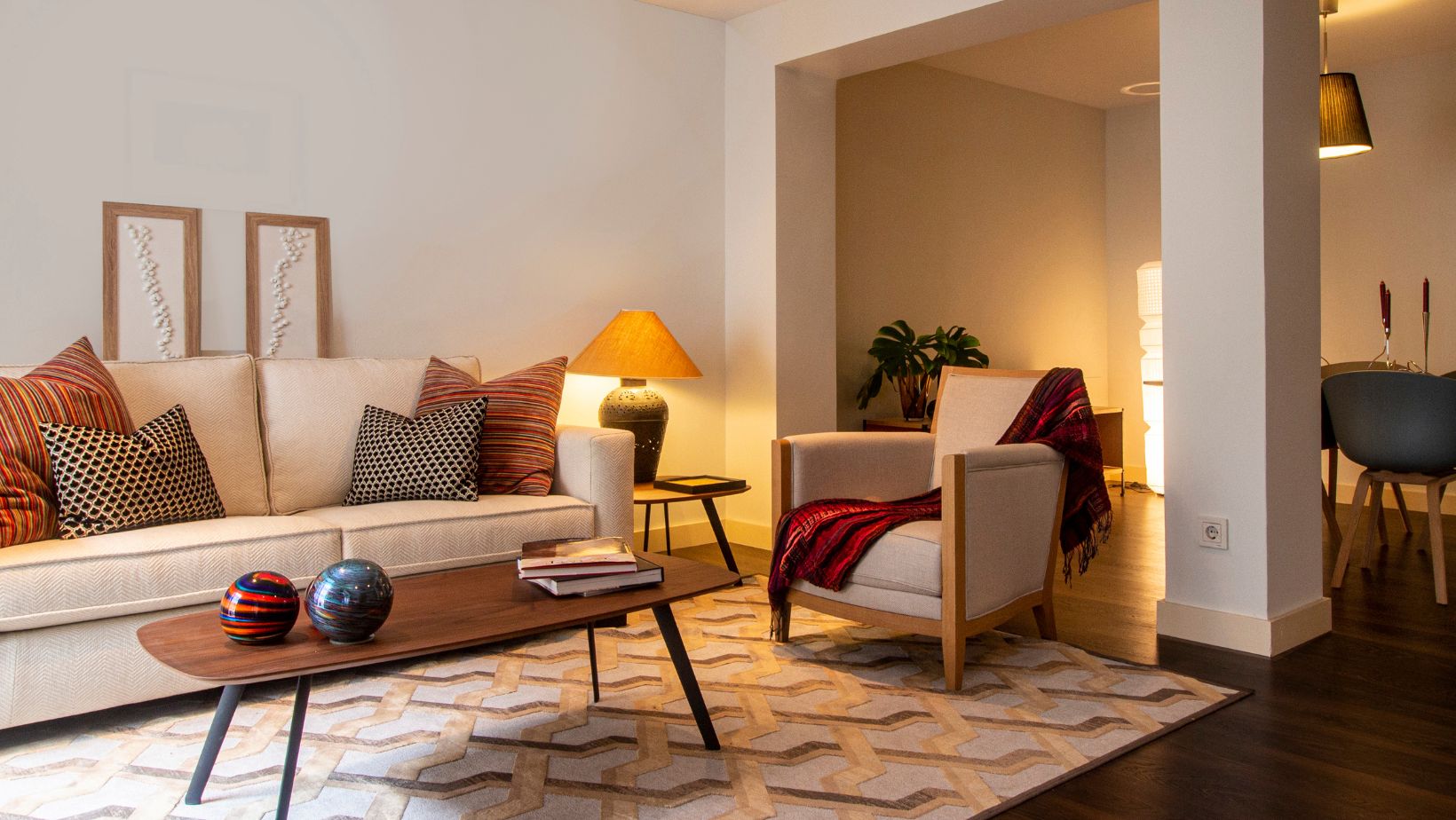
Matching living room furniture is crucial for creating a cohesive and harmonious space. When furniture pieces complement each other in terms of style, color, and design, they contribute to a unified aesthetic that enhances the overall ambience of the room.
This not only makes the space more visually appealing but also helps maintain a sense of order and balance. Functionally, matching furniture ensures that pieces work well together in terms of size and usability, optimizing the layout for comfort and practicality.
Additionally, a well-coordinated living room reflects personal style preferences. Overall, matching living room furniture plays a significant role in creating an inviting and aesthetically pleasing environment that residents and guests alike can enjoy. In this article, we’ll give you our top tips for matching living room furniture in Australia.
Our Ten Furniture Matching Tips
- Choose a Theme or Style: Decide on a theme or style for your living room, such as modern, traditional, minimalist, or eclectic. This will guide your furniture choices and ensure coherence.
- Consider Proportions: Ensure that furniture pieces are proportionate to each other and the size of the room. Avoid overcrowding or excessively large pieces that dominate the space.
- Coordinate Colors: Select a color palette for the room and choose furniture that complements or matches these colors. This could involve using complementary colors, opposing colors, or shades within the same color family.
- Mix Textures and Materials: While matching in style, vary textures and materials to add visual interest. For instance, pair a smooth leather sofa with a textured fabric armchair.
- Focus on Key Pieces: Start with a focal point piece, such as a sofa or a prominent coffee table, and build around it. This helps anchor the room’s design and makes matching other pieces easier.
- Balance Patterns: If using patterns, ensure they harmonize with each other. Mix larger patterns with smaller ones and use solids or neutrals to balance out the visual impact.
- Use Accent Pieces: Introduce accent pieces like throw pillows, rugs, or artwork that tie the room together. These can add pops of color or texture while complementing the main furniture.
- Consider Functionality: Match furniture not only in style but also in function. Ensure each piece serves its intended purpose well and contributes to the overall usability of the room.
- Maintain Visual Flow: Arrange furniture to create an open and inviting layout. Allow for easy movement through the room and ensure that furniture placement enhances traffic flow.
- Personalize with Accessories: Personalize the space with accessories like lamps, plants, or decorative items that reflect your style and enhance the cohesive look of the room.
How to Get Started
Matching your furniture to show off your great sense of style at home can be a little overwhelming if you don’t know where to start. It’s perfectly fine not to perfectly match your furniture right away. Your home should reflect your style and preferences, allowing for diversity in colors, styles, and textures that feel authentically yours.
Embracing eclectic decor can add character and charm, showcasing a curated mix of pieces that tell a unique story. Practical considerations like budget and availability also influence choices, encouraging a gradual and thoughtful furnishing process. Lastly, evolving tastes and trends mean that flexibility in design allows your space to adapt over time, ensuring it remains a comfortable and expressive reflection of your personality.
If you are looking to get started but don’t want to overhaul your entire living room, buying one new piece at a time is the best way to get started. Likewise, you might be surprised how effective rearranging your furniture can be.
Start creating your ideal living space today, and embrace the freedom of mixing and matching furniture. Whether you prefer cohesive or eclectic styles, your home should reflect your unique personality and needs.
Don’t wait—start transforming your living room into a place you’ll love to call home.







